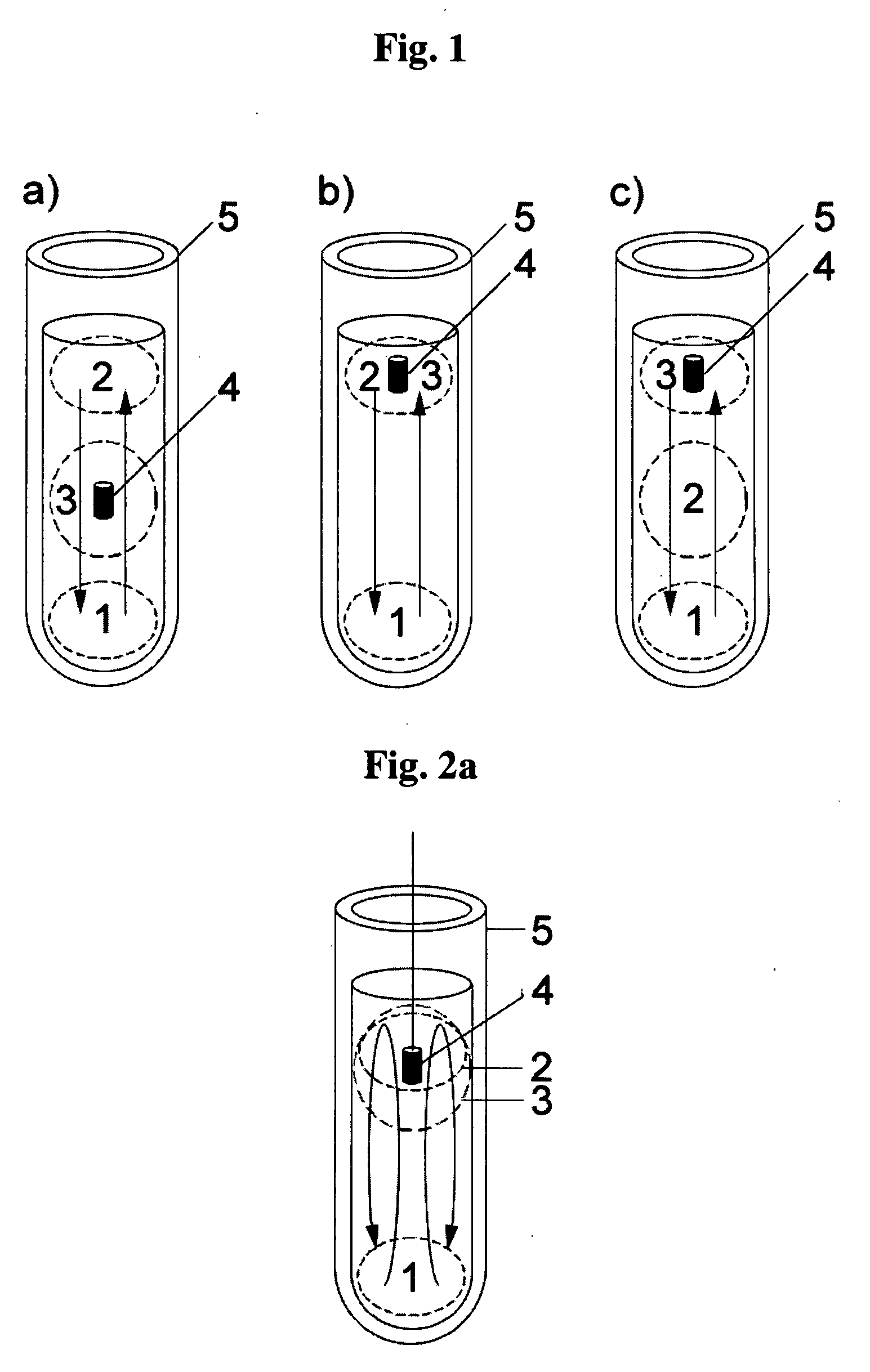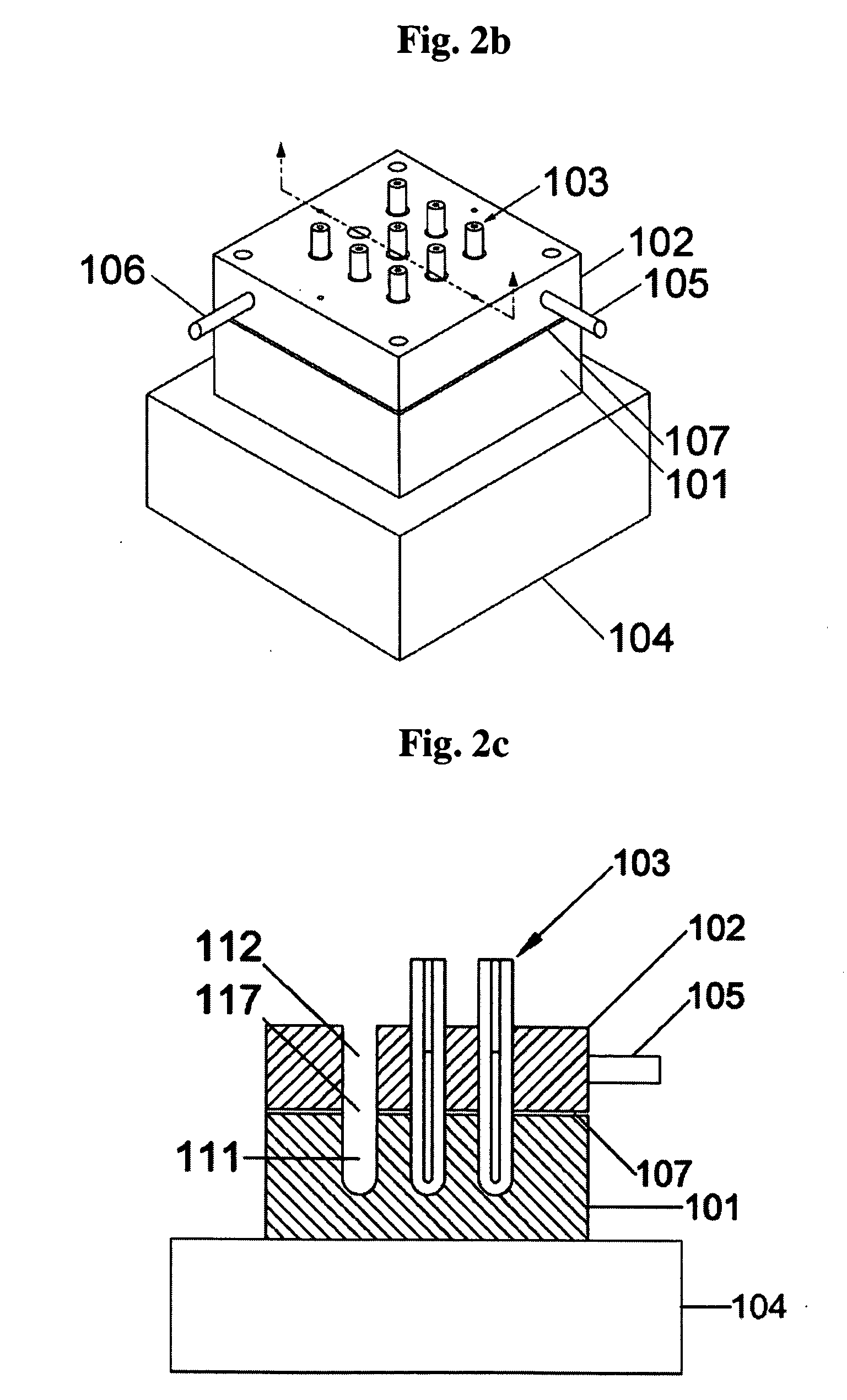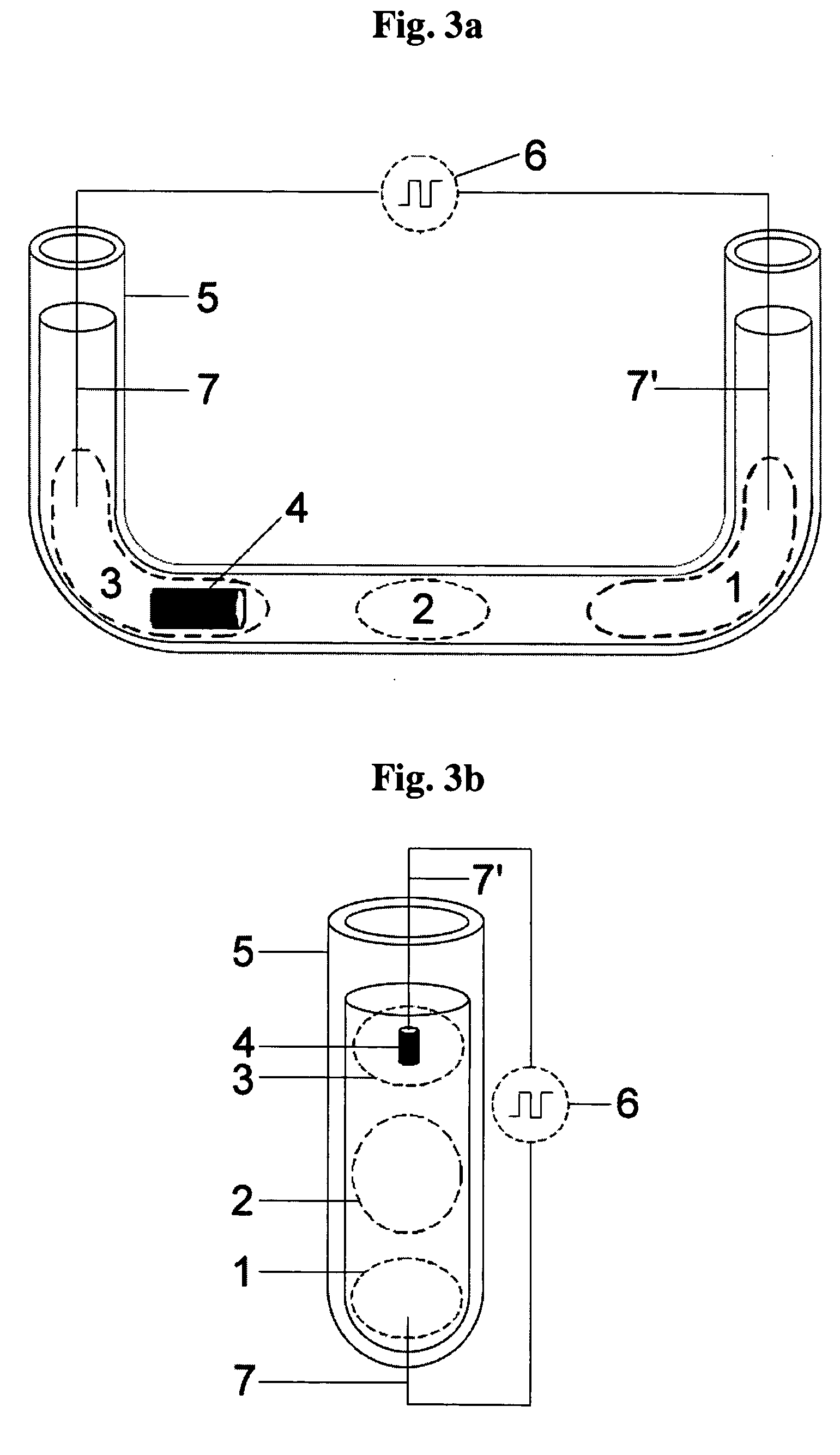Method and apparatus for amplification of nucleic acid sequences using immobilized DNA polymerase
a nucleic acid sequence and immobilized dna technology, which is applied in the field of methods and apparatuses for amplification of nucleic acid sequences using immobilized dna polymerase, can solve the problems of difficult reuse of used enzymes, difficult to remove dna polymerase, and prior nucleic acid sequence amplification methods can only use thermostable dna polymerases, etc., to achieve easy purification, improve nucleic acid replication accuracy, and easy to remov
- Summary
- Abstract
- Description
- Claims
- Application Information
AI Technical Summary
Benefits of technology
Problems solved by technology
Method used
Image
Examples
Embodiment Construction
. Preparation of the Immobilized DNA Polymerase
[0097] The 65 base single stranded DNA and the KS primer shown below were mixed in a pH 8.3 phosphate buffer at 1:1 molar ratio. The resulting solution was incubated at 94.degree. C. for 10 min and then cooled down slowly below 35.degree. C. During this process, the 65 base single stranded DNA and the KS primer were annealed each other to form a partially double stranded DNA. An appropriate number of moles of Taq DNA polymerase (AmpliTaq Gold) purchased from Perkin Elmer (U.S.A.) was then added to this solution and the resulting mixture was incubated in a dry bath at 72.degree. C. for 10 min. Then, the mixture was moved to a dry bath at 50.degree. C. and incubated for 20 min to finish preparation of a masked DNA polymerase in which the partially double stranded DNA become bound to the active site of the DNA polymerase.
1 KS primer: 5'-CGAGGTCGACGGTATCG-3' (SEQ ID NO: 1) 65-mer: 3'-CCAGCTGCCATAGCTATTTTCTTTTCTTTCTTA (SEQ ID NO: 2) AGTTCTTT...
PUM
| Property | Measurement | Unit |
|---|---|---|
| Temperature | aaaaa | aaaaa |
| Pressure | aaaaa | aaaaa |
| Height | aaaaa | aaaaa |
Abstract
Description
Claims
Application Information
 Login to View More
Login to View More - R&D
- Intellectual Property
- Life Sciences
- Materials
- Tech Scout
- Unparalleled Data Quality
- Higher Quality Content
- 60% Fewer Hallucinations
Browse by: Latest US Patents, China's latest patents, Technical Efficacy Thesaurus, Application Domain, Technology Topic, Popular Technical Reports.
© 2025 PatSnap. All rights reserved.Legal|Privacy policy|Modern Slavery Act Transparency Statement|Sitemap|About US| Contact US: help@patsnap.com



